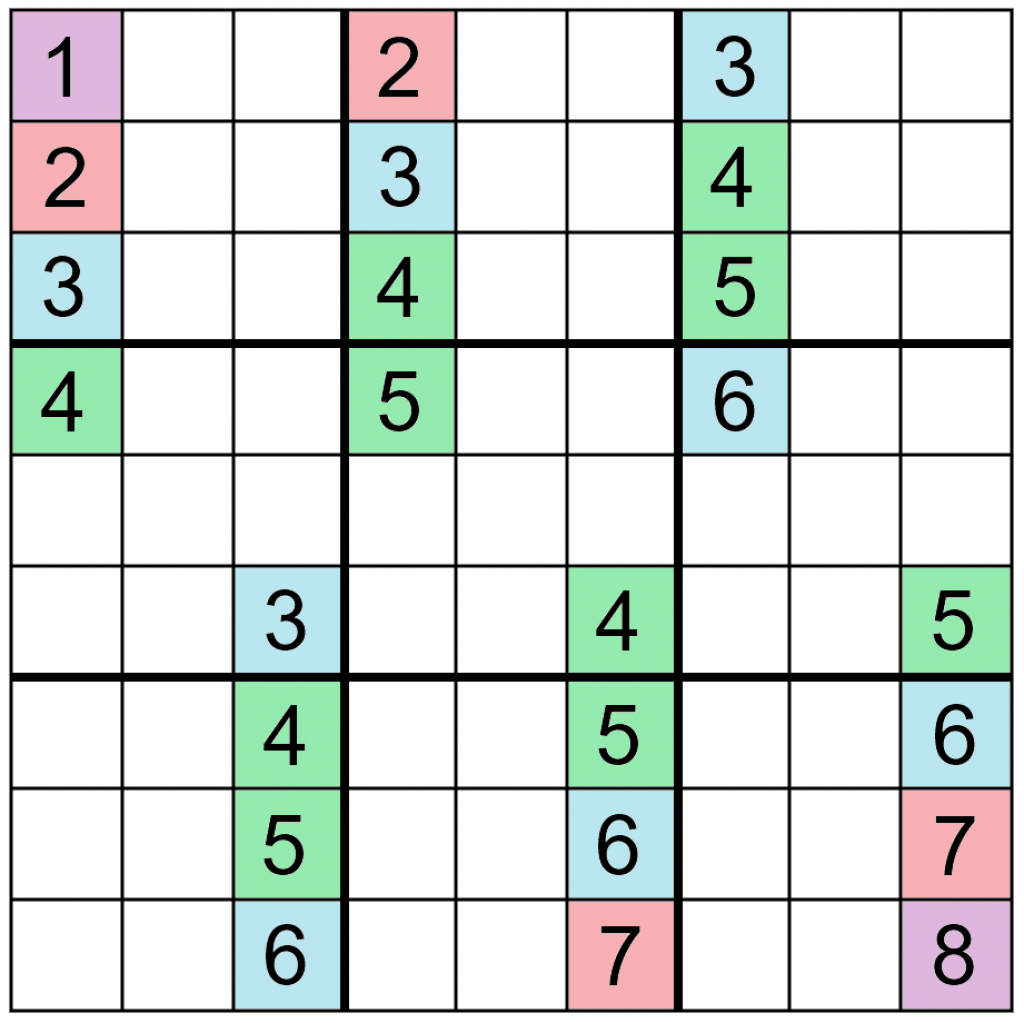

If you've never played Sudoku, you might find it confusing and difficult at first. However, this board game takes numbers out of the equation altogether, replacing them with bright colors.
SUDOKU RULES SERIES
Now it's time to try the Sudoku color puzzle wooden board game, which uses the same principles - a series of 3x3 grids which, put together, create one large 9x9 square. From four squares, and without being able to use 1 and 9 which must form the bread of the sandwich, there are only two ways to do this: 3,6,7,8 and 4,5,7,8, which we have pencilmarked accordingly in the grid above.You've probably heard of Sudoku, the popular Japanese game of numbers in boxes that became a worldwide sensation, appearing in newspapers all over the world. So the four green squares outside the sandwich region sum to 45-11-10 = 24. Now, we know that the digits between 1 and 9 sum to 11. We have also marked the squares outside of the 1 and 9 sandwich in green: However, where this becomes useful is when we know where the 1 and 9 are in a region that doesn't use every square in a row or column, and we can therefore use it to restrict the value of digits outside the 1 and 9 sandwich region.įor instance, look at the grid position below, where we have placed the 1 in row six of the grid. For instance, trivially in the grid above, since we know the red squares sum to 35, then the squares containing 1 and 9 must sum to 10 (45-10). Remember that since the number outside a row or column is the total between the 1 and 9 in that region, then the squares outside of the 1 and 9 must sum to 45 minus that number. Since 35 must be made from seven squares, and we have nine in any row or column, then we know that the 1 and 9 must be placed in the first and last squares in the column, and thus we can pencilmark those with 1 and 9 accordingly, and mark the rest of the column in red to indicate it can't contain 1 and 9, like this: Now look at column one of the example grid at the top of this page (which is the 9x9 sample puzzle you can play via the link above). In a 9x9 grid, the greatest total around the outside that is possible is 35, because that's the sum of the digits 2 through to 8. By working out which squares can and cannot contain the 1 and 9 in each row and column, you will gradually be able to make deductions. Press the same colour again to turn the square white again. You may find it useful to mark squares that cannot contain the high and low digits in some way, for instance with the online player you can mark a square red by highlighting the square then pressing the red colour box. When you start solving a sandwich sudoku, it is useful to look at each row and column and try to work out where the 1 and 9 (or 1 and 6 in a 6圆 puzzle) can be placed. No guessing is ever required, just careful thinking. Strategy and Solving Tips for Sandwich SudokuĪll our sandwich sudoku puzzles can be solved using logic, and have a single, unique solution. If you enjoy this puzzle type, you can join our online Puzzle Connoisseur's Club for £12 or $17 a year and play a new Sandwich Sudoku Puzzle puzzle every day of the year, together with many other fun and interesting logic puzzles. Play a sample 6圆 sandwich sudoku - this is recommended if you've never played sandwich sudoku before as it will introduce you to how the puzzle works whilst being quicker and simpler to solve.įor a 9x9 sandwich sudoku, you can play the example puzzle above, with our Online Sandwich Sudoku Puzzle Player.If you'd like to have a go at solving sandwich sudoku, we have two options for you: If you would like a visual explanation of the rules, here is a video outlining the sandwich sudoku rules as explained above: Where things can get particularly interesting is with numbers that can be made with different lengths of sum, for instance 11 could perhaps be 2+3+6 or 7+4. That's because a total of 4 can only be made in one way, the single digit 4 (we can't use 1+3 as the 1 is reserved for the outside of the sandwich and of course 2+2 involves repetition). For instance, a total of 0 means that the two digits (1 and 6 or 1 and 9 as relevant) are adjacent to each other, whilst a sum of 4 means that the order in a 9x9 puzzle must be 149 or 941 somewhere in the row or column. In a 9x9 sandwich, they indicate the sum of the numbers between the 1-9. In a 6圆 puzzle, these numbers indicate the sum of the digits between the 1 and 6 in each row and column. So there is one key extra rule that distinguishes between sandwich sudoku and standard sudoku: the numbers around the grid. This number tells you the sum of the digits placed between the 1 and 9 in that row or column. A number appears at the end of each row and column in the grid.Place the numbers 1-9 once in each row, column and 3x3 bold-lined box of the grid.The rules of Sandwich Sudoku are as follows:


 0 kommentar(er)
0 kommentar(er)
